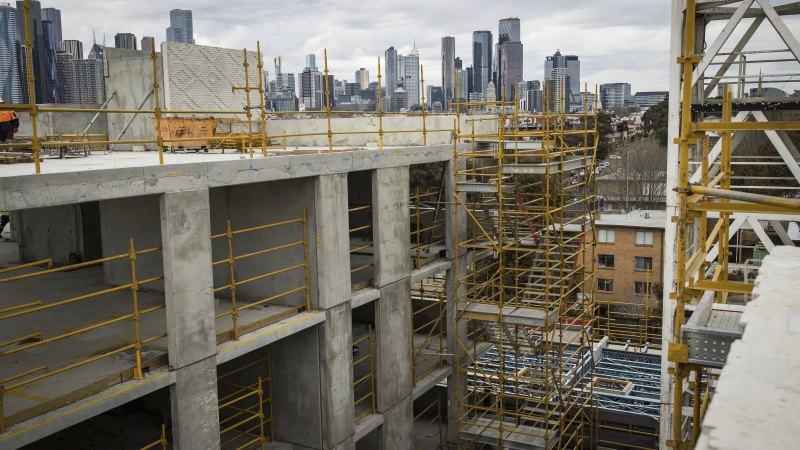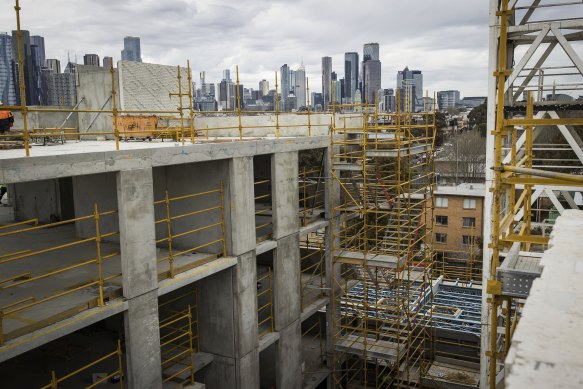Save articles for later
Add articles to your saved list and come back to them any time.
Unaffordable housing has a political cause and a political solution, but its victims simply don’t have enough political clout to make it happen. They are mainly the people born after the mid-1980s, who either can’t enjoy the freedom and security that owning a place to live in can provide, or if they do manage it, have no money left for anything else and no time for their kids because they have to work full-time, often in two jobs. But there are not enough of them to move the political dial.
It’s not just that renters are in the minority – some minorities have real power – but the nation’s attitude to housing is deeply ambivalent and well hidden. There has been, and still is, a public dialogue about the problem of housing affordability and plenty of sympathy expressed for the disenfranchised, but the majority who own a house are quietly happy with their high prices, and economists and businesspeople approve of the economic “wealth effect”. Also, the minority who don’t own a house talk about the property ladder and the need to get on it. The idea of housing as the main, if not the only, form of real wealth creation for ordinary people is deeply embedded in the national psyche. Superannuation is starting to rival it but is still a long way behind.
Australian capital-city housing is too expensive compared to incomes for a healthy society, and that needs to change.Credit: Darrian Traynor
That means doing something about it requires true political leadership – that is, doing something right that’s unpopular. Study after study on the subject has concluded that the high price of housing is leading to dangerous inequality and distorting the economy and society, yet political leaders have never tackled it effectively, for obvious reasons.
The fact that one of the three least-populated countries on earth contains the world’s second-most expensive housing is a national calamity and a stunning failure of public policy. For decades, political leaders have paid lip service to housing affordability, while doing nothing that would bring prices down. In fact, most of the big political decisions have done the opposite.
For example, the capital gains tax discount in 1999 was designed by business leaders to encourage investing in their businesses, but it only led to a surge in investment in housing. Since then, there have been official inquiries and taskforces into housing affordability in 2003, 2004, 2008, 2009, 2012, 2013, 2014, 2015, 2016, 2018 and 2022. Throughout all this time, house prices kept rising, except when APRA cracked down on bank lending to investors in 2017, and when the Reserve Bank increased interest rates in 2022. Policy has been nowhere, done nothing.
When the ALP adopted its policy to modify negative gearing in 2016 and there was an opportunity for the political class to come together and actually achieve something, it was turned into another occasion for rivalry, and was later excluded from the terms of reference of yet another inquiry. Transport infrastructure decisions have usually favoured roads – usually toll roads, not fast rail – and all the work on the latter has focused on the pie in the sky of inter-capital city trains, rather than anything designed to increase the supply of housing.
And perhaps most important of all, decisions about the level of immigration have been driven by the needs of business, with little thought to housing the new arrivals or to the impact on house prices.
Most prime ministers – especially Labor ones – seeking election or re-election promise to build houses, the latest being Anthony Albanese with his plan for 1.2 million houses over five years.
Albanese’s foray into housing began in October 2022 with a “National Housing Accord” agreed with the states that would result in 1 million new houses over five years. That was accurately described in the document as an “aspirational target,” which means that it was not a promise not supported by any actual policies.
At that point, the most recent housing completions data from the ABS was for the June quarter, during which 43,649 dwellings were built. If that rate continued for five years, 872,980 dwellings would be built, so the aspiration of 1 million over five years would be an increase of 14.6 per cent. In fact, in the five years before the pandemic, 1,028,480 dwellings were built, so the government was really just aspiring to get the amount of house building back to what it was pre-COVID.
Awkwardly, completions promptly fell to 38,710 in the quarter following the announcement of the aspirational target. Then at another national cabinet meeting in August 2023, the ante was upped by 20 per cent to 1.2 million houses over five years. The extra 200,000 houses (which means a total of 240,000 per year, or 657 new houses per day) are to be achieved with a bounty of $15,000 per house paid to state governments for releasing land, capped at $3 billion – so 200,000 bounties.
In October 2022, when they came up with the original one million aspiration, the states all agreed, among other things, to “undertake expedited zoning, planning and land release to deliver the joint commitment on social and affordable housing in well-located areas, including looking for immediate opportunities to free up well-located state land, for example in and around train stations and TAFE campuses including for affordable housing”.
So apparently $15,000 per house will entice states to do 20 per cent more than they had already promised, which was a pretty full and politically dangerous promise to begin with – freeing up land in “well-located” areas tends to annoy a lot of existing residents, otherwise known as NIMBYs. The Albanese policy seems to be based on the idea that state and local governments are so desperate for cash, they’ll do anything for $15,000 – even destroy their own re-election chances by annoying the NIMBYs who elected them, with apartment towers sprinkled through the leafy suburbs.
In any case, state governments and local councils don’t build houses and apartments, developers do. Even if 1.2 million lots are released over five years, developers will only build on them if they can make a profit, which applies to all political promises about housing.
As far as I can tell, the total number of houses “promised” during election campaigns by aspiring prime ministers between 1955 and 2022 is close to 9 million.
According to the Australian Bureau of Statistics, the total number of dwellings actually built in Australia since 1955 is 6.7 million. Shortfall: 2.3 million.
The bottom line is that Australian capital-city housing is too expensive compared to incomes for a healthy society, and that needs to change. Merely bringing the rate of increase in house prices back to the rate of growth in incomes isn’t enough – that ratio needs to come down, so it isn’t a stretch to buy a place to live. To achieve this will require active, and serious, government intervention. It won’t be enough simply to restore the amount of housing construction to what it was before the pandemic, as the federal government is now aspiring to do.
We don’t need another inquiry or a royal commission; there’s a room full of inquiries, reports and submissions. They just need a taskforce drawn from Treasury and the housing department to go through the work that’s been done already and come up with a policy that has a clear aim and is likely to work. That would be a good start.
This is an edited extract of Alan Kohler’s Quarterly Essay The Great Divide: Australia’s housing mess and how to fix it, published on Monday, November 27.
Most Viewed in National
From our partners
Source: Read Full Article

